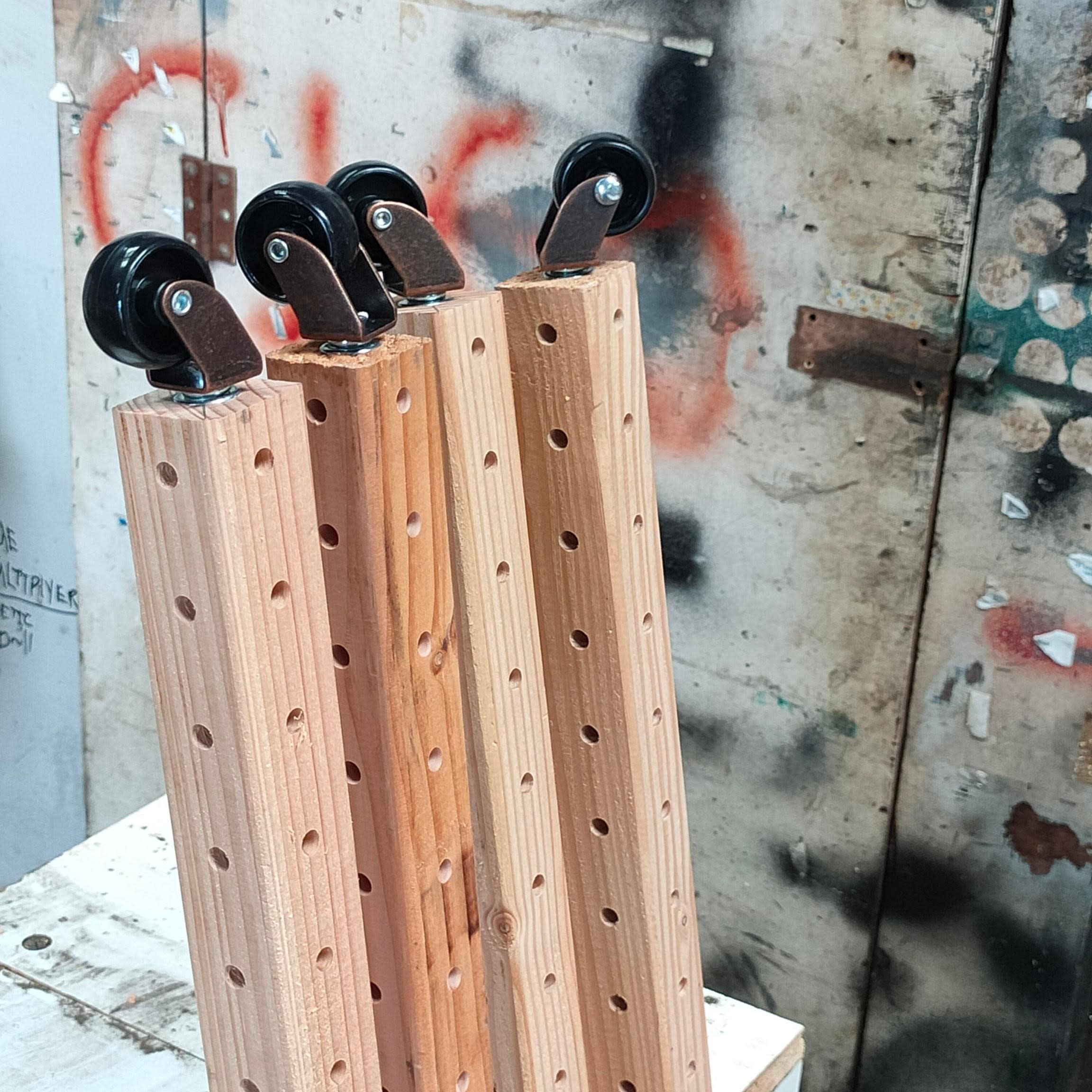Unlock the power of modular units with our 40mm Grid Unit (GU)
A grid unit, GU for short, is 40mm.
This can be in one dimension - 40mm in length, two dimensions - a 40mm x 40mm square, or in three dimensions - a 40x40x40 cube.

Grid Beams
Grid Beams are one application of the Grid Unit.
They are a stack of Grid Unit cubes (pictured above) that make a beam. They are one Grid Unit in width and depth, and the length can be any number of units only limited by the length of the available material.
The 8mm holes of each grid unit cube creates a repeating pattern of holes on 40mm centre along the length of the beam.

Grid Panels
Grid Panels are another application of Grid Units and one of the essential building blocks of Grid Kit.
Grid Panels are measured in length and width multiples of 40mm and are only limited by the size of the raw material.
An example of a Grid Panel is a sheet of plywood. A standard sheet of plywood is 2400mm x 1200mm or 60gu x 30gu. Each 40mm square of the Grid Panel has an 8mm hole drilled at the centre of the square.

Made With The Grid
With just these two components based on a grid unit, there are many possibilities for what can be built, and the process becomes a simple process of assembly. As more components are developed within the grid unit frame work the complexity of what is possible only increases.






How To Read Grid Units
Grid units remove the need for constant measuring. Components have holes placed at regular intervals, making it easy to count units instead of using a ruler.
- Grid Beam Example: A beam labelled 30GU is 30 units long. Multiply the number of units (30) by 40mm to get the length — 1,200mm.
- Grid Panel Example: A panel marked 10GU x 25GU is 10 units wide and 25 units long. That equals 400mm x 1,000mm. You can quickly count the holes to confirm the size.
History: Rack Unit
A “rack unit” (or RU or U) is 1.75” (44.45mm) per 1U.
Originally designed for telephone equipment,
(See also: FutureRack PILL Project Thread)

The rack unit is now most commonly used in server racks.
(See also: FutureRack)

Of course, there's an XKCD comic: #1439
Why The Grid Unit is 40mm
We chose 40mm because it's compatible with several existing international standards and is a highly composite number.
- EuroPallets: 800mm × 1,200mm
- Plywood Sheets: 2,400mm × 1,200mm
- Aluminum 4040 V-Slot and T-Slot: 40mm × 40mm profiles
Plus, 40mm is a human size measurement. It's simple to imagine holding a 40mm cube, unlike a tiny 1mm cube or a massive 1-meter cube.
What Are Highly Composite Numbers?
Highly composite numbers have more divisors than other numbers of the same size. This means they can be split into many equal parts, making them super useful when you need to divide or organize things evenly.
Why They Work Well
Because they divide evenly without leftovers, highly composite numbers are handy in systems where flexibility is key. You'll find them in timekeeping, scheduling, and data storage.
Everyday Examples
-
60: Used in time—60 seconds in a minute, 60 minutes in an hour. It divides evenly by 1, 2, 3, 4, 5, 6, 10, 12, 15, 20, and 30. This makes it easy to break time into halves, quarters, sixths, and so on.
-
12: Shows up in dozens (like eggs or donuts) and 12-hour clocks. It divides evenly by 1, 2, 3, 4, 6, and 12, which helps when splitting things equally.
-
360: The number of degrees in a circle. It can be divided by many numbers like 2, 3, 4, 5, 6, 8, 9, 10, 12, 15, 18, and more. This is practical for measuring angles and drawing shapes.
International Standards
International standards are global agreements that ensure products work together. By using a 40mm grid unit, Grid Kit is compatible with many existing components and systems, making it easy to integrate with other products already following these standards.



